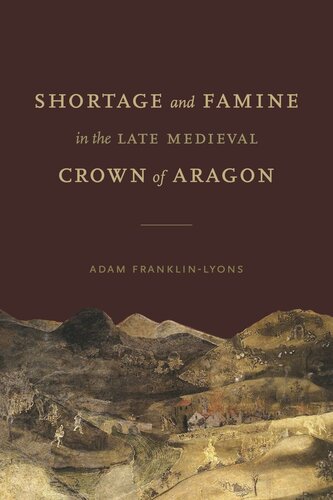

Most ebook files are in PDF format, so you can easily read them using various software such as Foxit Reader or directly on the Google Chrome browser.
Some ebook files are released by publishers in other formats such as .awz, .mobi, .epub, .fb2, etc. You may need to install specific software to read these formats on mobile/PC, such as Calibre.
Please read the tutorial at this link: https://ebookbell.com/faq
We offer FREE conversion to the popular formats you request; however, this may take some time. Therefore, right after payment, please email us, and we will try to provide the service as quickly as possible.
For some exceptional file formats or broken links (if any), please refrain from opening any disputes. Instead, email us first, and we will try to assist within a maximum of 6 hours.
EbookBell Team

4.1
60 reviewsIn the late fourteenth century, the medieval Crown of Aragon experienced a series of food crises that created conflict and led to widespread starvation. Adam Franklin-Lyons applies contemporary understandings of complex human disasters, vulnerability, and resilience to explain how these famines occurred and to describe more accurately who suffered and why.
Shortage and Famine in the Late Medieval Crown of Aragon details the social causes and responses to three events of varying magnitude that struck the western Mediterranean: the minor food shortage of 1372, the serious but short-lived crisis of 1384–85, and the major famine of 1374–76, the worst famine of the century in the region. Shifts in military action, international competition, and violent attempts to control trade routes created systemic panic and widespread starvation—which in turn influenced decades of economic policy, social practices, and even the course of geopolitical conflicts, such as the War of the Two Pedros and the papal schism in Italy.
Providing new insights into the intersecting factors that led to famine in the fourteenth-century Mediterranean, this deeply researched, convincingly argued book presents tools and models that are broadly applicable to any historical study of vulnerabilities in the human food supply. It will be of interest to scholars of medieval Iberia and the medieval Mediterranean as well as to historians of food and of economics.